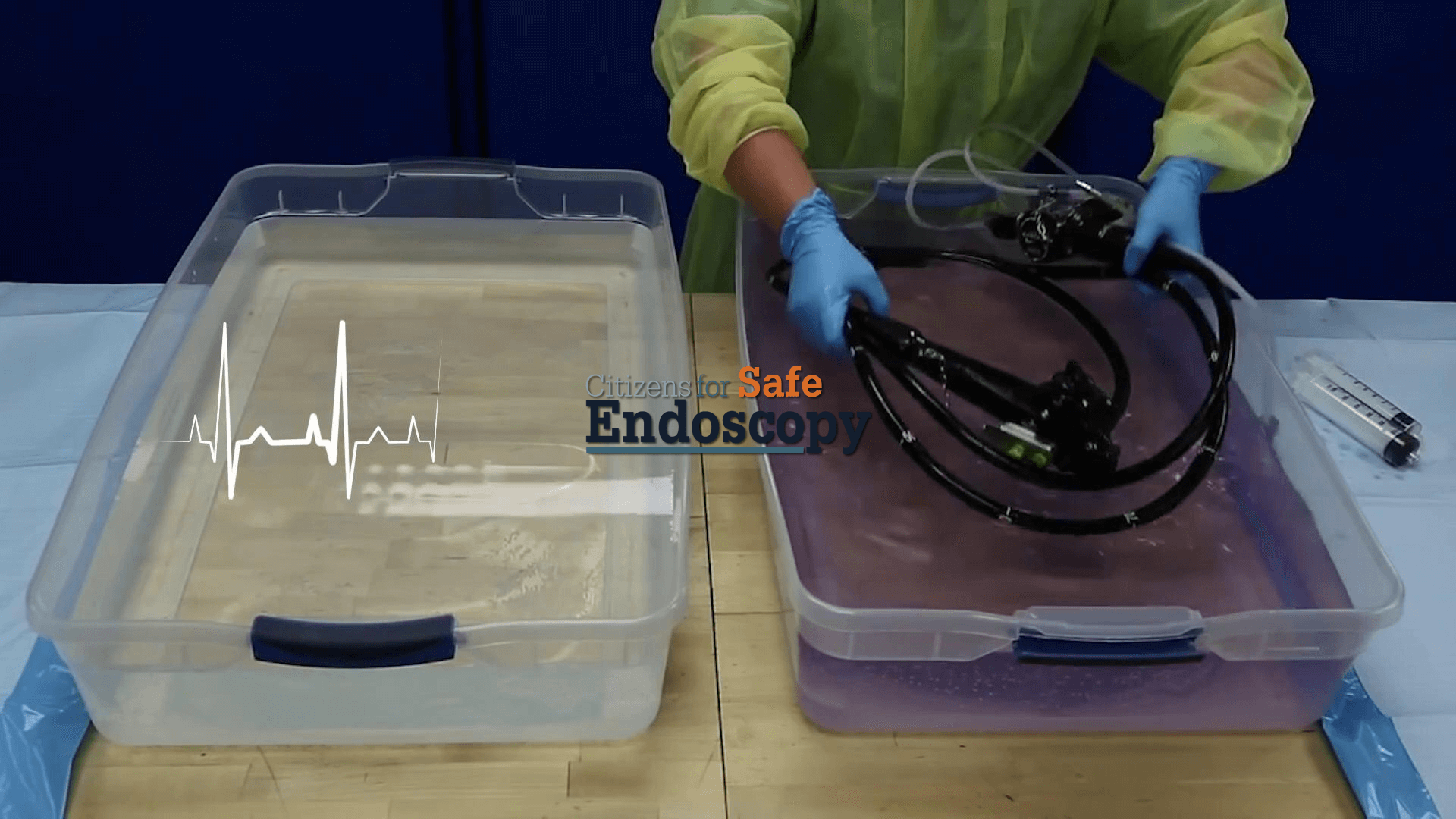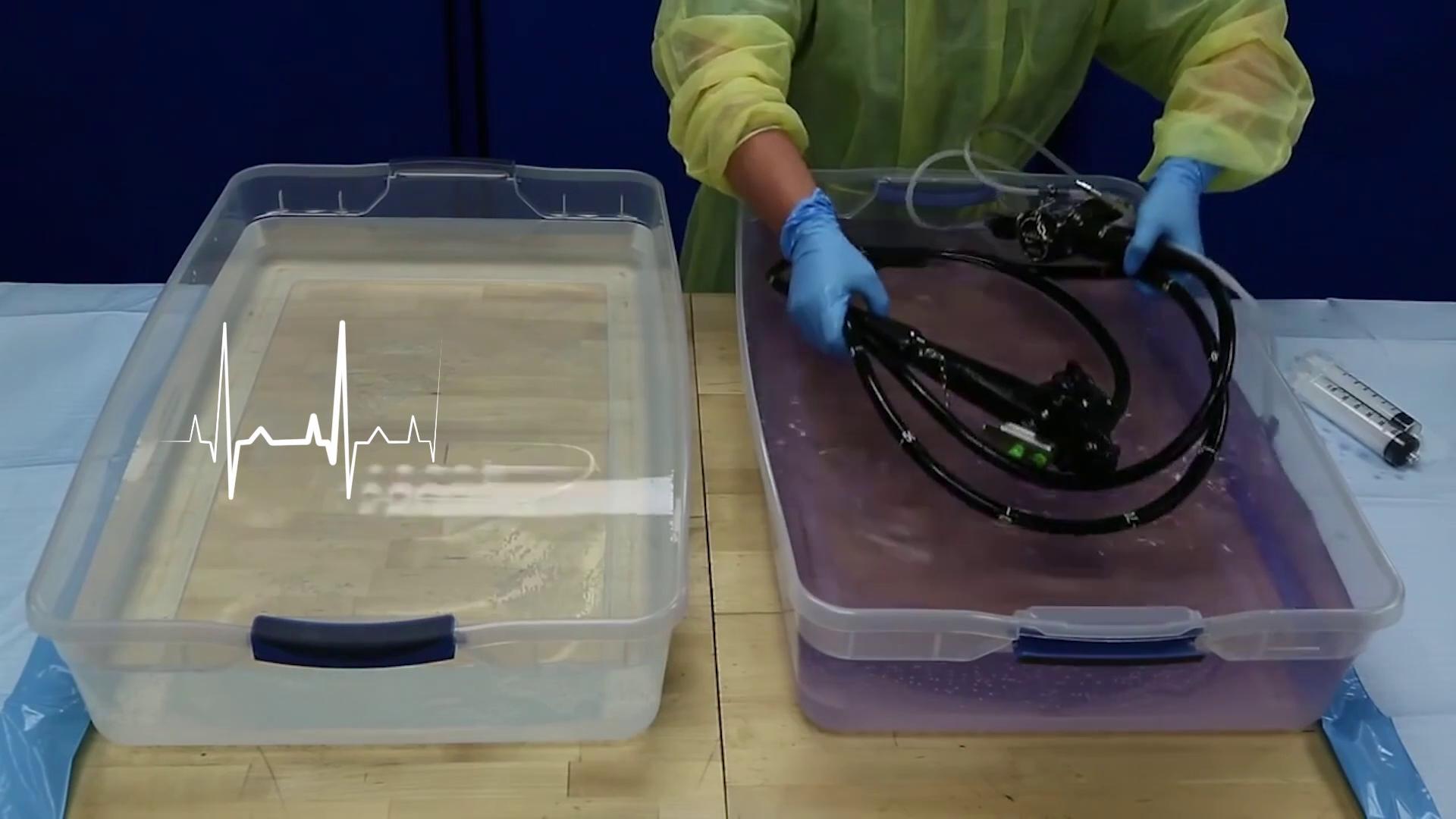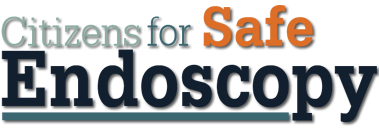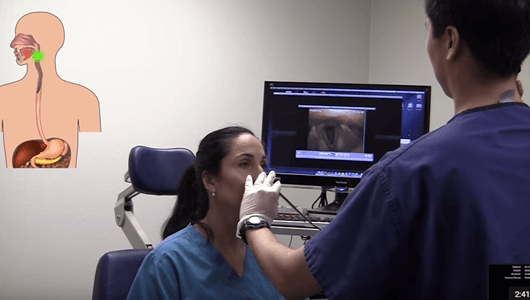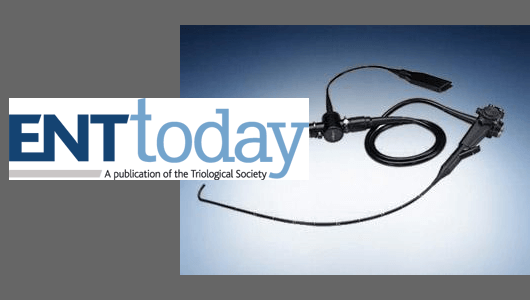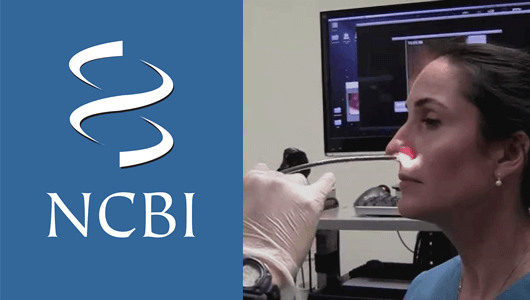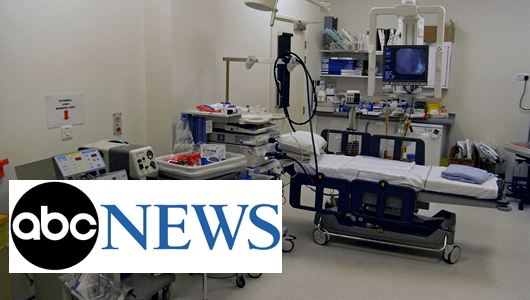The Solution to Safer Endoscopy
Our mission at Citizens for Safe Endoscopy is very simple. We believe that 270,000 Americans are being needlessly infected by non-sterile flexible endoscopes. Our mission is to educate patients that flexible endoscopes are disinfected as opposed to sterilized. Disinfection kills almost all microbial life, but not all. Infections such as Hepatitis, Tuberculosis, HIV, Human Papilloma Virus, and KJD (Mad Cow Disease), can live through the current reprocessing standard of disinfection. Flexible endoscopes have many grooves, nooks, and hard to reach edges that are impossible to clean. When scopes are serviced and taken apart, debris frequently discovered in these allegedly disinfected endoscopes are fecal matter, blood, and mucous. There is no reason why healthy patients are getting sick during colonoscopies, sigmoidoscopies, bronchoscopies, and other endoscopic procedures, when technology exists today to give every patient a sterile and safe endoscopy.
We need to change the standard of care to sterilization and we need a patient bill of rights where every patient is informed about the reprocessing standards of an endoscopy as well as other procedures.
Citizens for Safe Endoscopy is dedicated to preventing all future cases of cross-contamination due to endoscopic procedures. We believe that we can prevent 270,000 healthy patients from getting sick by
- Informing the public of this health epidemic and patients who may not even know that they have contracted a disease from cross-contamination
- Enlist as many people as possible to join our cause to fight for and protect the 15,000,000 people every year who have an endoscopic procedure and to make sure that these endoscopies are safe and sterile.
- Building a coalition of victims, concerned citizens and health professionals to fight against the needless amount of cross-contamination.
- Lobbying for legislation all across the country to change the standard of care in the reprocessing of endoscopes from disinfection to sterilization.
- Prevent this archaic practice and push the medical profession to use the new technology out there to achieve complete sterilization.
- Convince the hospitals, doctors, and other medical facilities to explore all new technologies to achieve standard, including, but not limited to, protective single-use barrier devices.
WHAT IS ENDOSCOPY?
Endoscopic procedures are typically performed on an outpatient basis and generally involve less recovery time and patient discomfort than traditional surgery. The patient benefits and cost savings associated with endoscopy have caused many governmental reimbursement programs and private health insurance plans to encourage the use of endoscopic procedures in a number of medical applications.Endoscopy is a minimally invasive technique that is being used to visually examine patients internally using a probe-like device inserted through the mouth or other orifices. It is used with increased frequency in a growing number of medical applications. Endoscopic therapeutic procedures, unlike more traditional open surgical procedures, can be performed without a major incision, in most cases without general anesthesia, and, therefore, safer and less expensive than traditional surgical procedures.
The Problem
Endoscopes were originally designed for their optics and function, not for cleanability – after all, they are used in non-sterile areas of the body. Endoscope manufacturers are well aware of the problems inherent in their design because in the process of repairing endoscopes, they must remove the stained and contaminated channels. These channels contain blood, mucous, feces and numerous diseases and bacteria. In fact, endoscopes are impossible to sterilize. In fact, your dentist’s drill is much cleaner than an endoscope.
Is there no doctor in Salem, Oregon that performs TNE? I called the only ENT clinic here and they only go look at the voice box area and said you have to go to a GI doctor for esophogeal issues. This is the state capitol and we should not be so behind the times….For heaven’s sake, this should be the “standard of care” for people who do not want the old sedated endoscopy.
Thank you,
– Karen
– Salem Oregon
The Solution
A proprietary flexible endoscope system designed to eliminate the risk of cross-contamination to patients and health-care professional’s also provides quick changeover between patients by eliminating the difficult task of cleaning the endoscopes. The risk of cross-contamination results from the reuse of conventional flexible endoscopes. This system consists of two main components; a proprietary sterile disposable sheath and a reusable flexible endoscope. The endosheath is designed to cover all surfaces of the endoscope that come into contact with the patient and contains the air, water, suction and accessory channels that are a part of conventional flexible endoscopes, thus providing a contamination-free instrument and substantially reducing the burdensome cleaning required of conventional flexible endoscopes. The Sheath technology is not available for all endoscopic procedures, but some doctors who are concerned about this deadly issue use the Sheath regularly for Transnasal Endoscopic procedures (TNE).
What is TransNasal Endoscopy?
Transnasal Endoscopy using digital full screen, CCD and LED technology, combined with a disposable Endosheath (TNE/DE), represents the best and most effective method for esophageal examinations in the current medical environment.
TNE/DE is the only currently available technology that combines:
- Image quality
- Procedure-related cost containment
- Patient and staff safety
- Improved professional reimbursement outcomes
- Control of patient related costs and expenditures
- Diagnostic capability equal to current video-endoscopy
- Improved manpower-related logistics
Over the past 20 years there has been a significant increase in esophageal cancer, in particular adenocarcinoma of the EG junction, driven largely by the continued dramatic increase in reflux-related disease including Barrett’s esophagus. This has heightened the demand for investigative endoscopy to provide early detection, diagnosis and prevention of esophageal cancer.
During this same period of time, there has been a concomitant decline in available manpower (namely the number of Physician-providers), combined with increased competition for skilled Endoscopists’ time due to the burden of screening colonoscopy. In addition, we continue to experience an adversarial insurance environment with accelerated downward pressure on reimbursements, and the increased burden on the patient by factors such as rising premiums, co-pays, and lost productivity and income as the result of time lost due to having to undergo sedated procedures. Read more about TransNasal Endoscopy…
Latest News:
Joan Rivers’ News: More Details Revealed About Yorkville Endoscopy Doctors’ Medical Malpractice
In a new Joan Rivers news report, the personnel of the said Upper East Side clinic supposedly did not stop the TV host's scoping procedure even after her pulse and blood pressure dropped.
Fox News: Joan Rivers’ death: Risk factors of sedation and general anesthesia
Following the death of 81-year-old Joan Rivers from cardiac arrest on Sept. 4, questions have arisen as to the safety of the procedure she underwent at an outpatient endoscopy clinic and whether she was under general anesthesia.
What went wrong during Joan Rivers’ endoscopy and are there lessons to be learned from her death?
On August 28th, 2014, something happened during Joan Rivers’ endoscopy that took her life, and there is now clear evidence that many things went wrong that took Joan Rivers’ life.
Trans-Nasal Esophagoscopy; Esophagus Exam Endoscopy (Example Video)
This video demonstrates how the esophagus can be examined without any sedation.
Screening for esophageal disease with unsedated transnasal endoscopy is safe and feasible
Researchers report that unsedated transnasal endoscopy is a feasible, safe, and well-tolerated method to screen for esophageal disease in a primary care population.
Transnasal Esophagoscopy: A Viable Alternative to Conventional Procedures
From EntToday: Transnasal esophagoscopy (TNE) offers physicians and patients a number of advantages compared with conventional esophagoscopy (CE) performed transorally with sedation, and has become increasingly popular in clinical practice over the past several years. [...]
NY Times: Finding, and Treating, Esophageal Cancer
Diagnosed early, well before patients develop swallowing problems, esophageal cancer is usually curable. A cure is most certain if the problem is detected and corrected before or during the advanced precancerous stage. But for about 90 percent of patients, early detection and treatment are missed, and the outcome is fatal.
Transnasal Route: New Approach to Endoscopy
An ultrathin endoscope inserted via a nostril, so-called transnasal esophagogastroduodenoscopy (TN-EGD) is widely accepted nowadays.
Unsedated transnasal endoscopy: A Canadian experience in daily practice
The use of sedation is also associated with an increase in cost, loss of work on the day of endoscopy and the need for the patient to be accompanied home after the procedure. Transnasal endoscopy has advantages such as no sedation and less patient monitoring, nursing time and expenses than conventional per oral EGD.
The Dangers of Procedural Sedation
From ABC News: How much are we willing to risk for more comfort and less anxiety when we undergo routine medical procedures at the dentist's or doctor's, or when we visit hospital emergency rooms? That [...]
